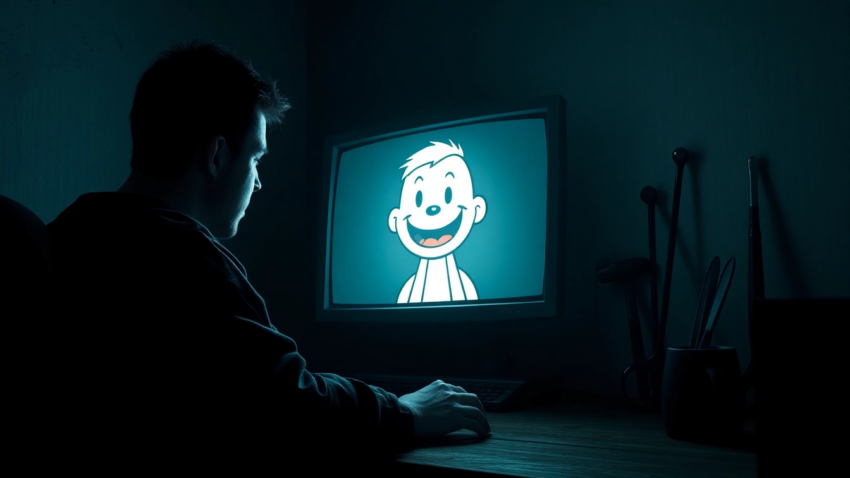
Blood Money: The Psychological Horror of Morality and Survival in the Dark Clicker Game
Overview and Context: BloodMoney – A Dark Clicker Descent into Morality
In the realm of psychological horror and morally challenging gaming experiences, blood money stands out as a provocative and disturbing title. This dark clicker game immerses players in a grim narrative where every action, every click, and every upgrade pushes the protagonist closer to moral decay. Unlike traditional games that focus solely on gameplay mechanics or storytelling, BloodMoney uniquely intertwines both, forcing players to confront uncomfortable questions about human nature, survival, and ethics. As you navigate this bleak universe, the game masterfully uses visual cues, sound design, and narrative tension to craft an experience that is as psychologically intense as it is mechanically engaging. This article explores the depths of BloodMoney, examining its gameplay mechanics, thematic elements, community insights, and what it ultimately reveals about the human psyche when pushed to its moral limits.
BloodMoney Game Mechanics and Core Gameplay
Clicking Mechanics and Progression
At its core, BloodMoney is a clicker game, where the primary interaction involves clicking on Harvey, a cheerful but increasingly unsettling character. Each click on Harvey generates a specific amount of money—initially a modest sum, but as the game progresses, the earnings increase exponentially through upgrades. The gameplay loop is simple yet deeply engaging: click to accumulate funds, purchase upgrades, and progress towards the critical goal of raising $25,000 for medical bills. The mechanic resembles classic idle games but is layered with psychological horror elements that intensify as Harvey’s suffering becomes more apparent.
Progression is tracked through visual changes in Harvey’s appearance and reactions, subtle dialogue cues, and the increasing brutality of the tools available in the shop. These tools, ranging from needles to hammers, serve to boost earnings but at a significant moral and visual cost. The game’s design cleverly ensures that each upgrade feels consequential—both in terms of profit and in the psychological toll it takes on Harvey and the player.
The Upgrade System and Its Dark Evolution
The upgrade system is a pivotal aspect of BloodMoney, providing a tangible sense of progression and risk. Early upgrades are innocuous, such as pillows or gentle tools, which cause minimal suffering. However, as players seek faster gains, the shop offers increasingly violent options, including scissors, needles, and hammers. Each purchase not only amplifies the clicking income but also deepens Harvey’s pain and suffering, which is subtly reflected in his reactions and visual cues.
This system creates a twisted risk-reward dynamic: the more violent the tool, the higher the earnings, but at a significant moral and emotional cost. The game’s design encourages players to reflect on their choices—do they prioritize efficiency and survival at any moral expense, or do they attempt to minimize harm, risking slower progress? The upgrade system embodies this moral dilemma, making every decision weighty and impactful.
The Dark Narrative of BloodMoney and Its Characters
Harvey: The Innocent Facade and Hidden Depths
Harvey is the game’s central figure, a cheerful and seemingly innocent character who interacts with the player in a light-hearted manner at first. His bright demeanor contrasts sharply with the increasingly disturbing environment, creating a jarring dissonance that amplifies the game’s unsettling atmosphere. As the game advances, Harvey’s reactions become more distressed, and visual cues reveal his pain and fear, subtly forcing players to confront their moral choices.
Interestingly, observant players have noted that Harvey appears genuinely surprised by the more violent tools in the shop, such as the hammer. His reactions imply he may not fully understand the extent of the tools or their effects, which adds a layer of moral complexity—perhaps Harvey is an innocent being manipulated or unaware of the true nature of this dark transaction. This ambiguity enhances the psychological horror, blurring the line between victim and accomplice.
The Shop: A Portal to Darkness
The shop in BloodMoney functions as the game’s moral and mechanical hub. It offers an array of tools that escalate in violence and brutality, each promising higher profits. Early items are innocuous—pillows or gentle needles—while later options include hammers and blades. The game’s subtle storytelling hints that the shop might be controlled by darker forces, as the availability of increasingly violent tools feels almost predatory.
What makes the shop particularly disturbing is Harvey’s apparent lack of awareness about the true nature of these tools. His surprise at the more violent options suggests he might not understand what he’s facilitating. This detail raises questions about morality, manipulation, and innocence, forcing players to consider whether their actions are truly voluntary or if they are complicit in a darker scheme.
Multiple Pathways and Endings: Moral Outcomes
Three Distinct Endings Based on Player Choices
BloodMoney offers a compelling narrative structure with multiple endings, each reflecting the moral choices made during gameplay. The endings—The Good Ending, Normal Ending, and Bad Ending—serve as a mirror to the player’s decisions and moral compass.
- The Good Ending: Achieved by minimizing Harvey’s suffering, even if it means slower progress. Here, the player focuses on ethical choices, avoiding the most violent tools, and perhaps sacrificing some earnings to preserve Harvey’s well-being. The visual cues show Harvey recovering or remaining less distressed, culminating in a hopeful conclusion that emphasizes morality and compassion.
- The Normal Ending: Represents a balanced approach, using some moderate violence while still leaving room for remorse. This ending showcases Harvey’s reactions that are distressed but not utterly broken, and the storyline hints at the moral ambiguity of such compromise.
- The Bad Ending: Maxes out profits by employing the most violent tools, disregarding Harvey’s suffering entirely. Harvey’s appearance is shattered, and his reactions are filled with despair and pain. This conclusion starkly portrays moral decay, emphasizing greed and efficiency over empathy.
The game’s tracking system subtly registers the player’s choices, influencing which ending unfolds. This design encourages multiple playthroughs, allowing players to explore different moral landscapes and confront the consequences of their decisions.
The Psychological Horror and Emotional Design
Visual Cues and Atmosphere
BloodMoney’s success in creating an unsettling atmosphere lies in its meticulous visual and auditory design. Harvey’s appearance changes from cheerful and bright to battered and terrified, serving as a visceral indicator of the player’s moral choices. The game uses subtle cues—faltering dialogue, visual streaks of pain, and Harvey’s increasingly distressed expressions—to evoke empathy and guilt.
Sound design complements the visuals, with disturbing audio cues and unsettling silence heightening tension. Every click, every upgrade, is accompanied by visual and auditory feedback that amplifies the emotional stakes, making players feel the weight of their actions.
Time Pressure and Psychological Tension
Adding to the psychological intensity, the game introduces a time pressure element. The player must reach the $25,000 goal within a limited timeframe, mimicking real-world urgency and heightening moral stakes. This pressure compels quick decision-making, often leading players to choose the most efficient but ethically questionable options—mirroring real-life dilemmas faced under stress and necessity.
Community Insights and Player Reactions
Shared Experiences and Moral Reflections
The BloodMoney community is vibrant, with players sharing their experiences, strategies, and moral reflections. Many express feelings of guilt and discomfort, especially when employing the more violent tools. Some players report attempting to reach the good ending by deliberately avoiding the most brutal options, experiencing emotional turmoil in the process.
Others revel in exploring the game’s dark mechanics, questioning whether the game’s design is an indictment of human nature or merely a reflection of it. The community often discusses the symbolism of Harvey—innocence corrupted or a mirror to our own moral boundaries—and debates whether the game is an effective social commentary or simply a horror experience.
Videos and Playthroughs
Many gameplay videos highlight the emotional depth of BloodMoney. Viewers comment on how convincingly the game depicts the moral descent, with some noting how Harvey’s reactions become more subdued as suffering intensifies. These videos serve as a window into the psychological impact of the game, emphasizing its ability to evoke empathy, guilt, and reflection.
Thematic Depth: What BloodMoney Reveals About Human Nature
Testing Humanity in Desperate Situations
At its core, BloodMoney is an exploration of human morality under extreme conditions. It challenges players to consider how far they are willing to go when survival is at stake. The game suggests that moral boundaries are fluid and heavily influenced by context—what begins as a seemingly innocent clicker game transforms into a profound moral experiment.
Harvey embodies innocence and kindness, yet he becomes a vessel for the player’s moral choices. The progressively violent tools symbolize the darker impulses lurking within us, and the game questions whether our inherent nature is good or evil when pushed to its limits.
Symbolism and Psychological Reflection
The game’s subtle narrative hints that the shop’s darker tools may be controlled by malevolent forces, manipulating the player’s moral compass. Harvey’s genuine surprise at violent tools suggests he might be an unwitting pawn, further emphasizing themes of manipulation and innocence lost. These elements serve as a mirror for real-world dilemmas—how economic pressure, desperation, and societal forces can erode moral integrity.
Comparison to Other Dark Narrative and Psychological Horror Games
BloodMoney shares thematic similarities with other psychological horror titles that explore morality, such as the “Stanley Parable” or “The Cat Lady.” However, its unique blend of clicker mechanics and moral choice sets it apart. Unlike traditional horror games that rely on jump scares, BloodMoney induces discomfort through subtle visual cues, emotional engagement, and moral complexity.
It also bears thematic resemblance to games like “Undertale,” which confront players with moral dilemmas, but with a darker and more visceral approach. The game’s minimalist interface and focus on psychological tension echo the principles of games that aim to challenge players’ perceptions of right and wrong.
Final Thoughts: What BloodMoney Reveals About Human Nature
BloodMoney is more than just a dark clicker game; it is a mirror held up to our own moral boundaries. Through its disturbing gameplay, it forces us to question what we are willing to sacrifice for survival and success. The game’s design—combining subtle visual storytelling, emotional engagement, and moral ambiguity—creates an experience that lingers long after gameplay ends.
Ultimately, BloodMoney demonstrates that morality is complex, often situational, and deeply personal. It challenges players to reflect on their own values, empathy, and the capacity for darkness within us all. In doing so, it offers a profound commentary on the human condition, making it a significant title in the landscape of psychological horror and moral exploration.
If you are intrigued by the dark depths of human morality and want to experience a game that tests your ethical boundaries, explore more about blood money and its unsettling journey into the shadows of the human psyche.




